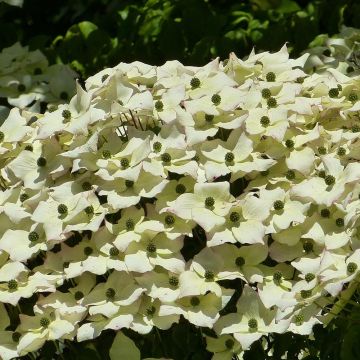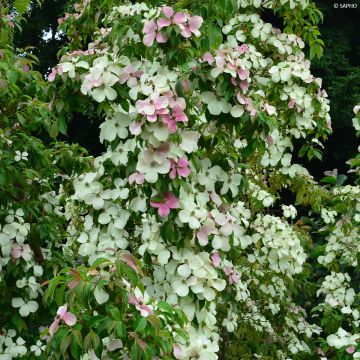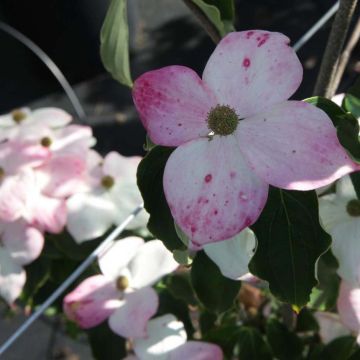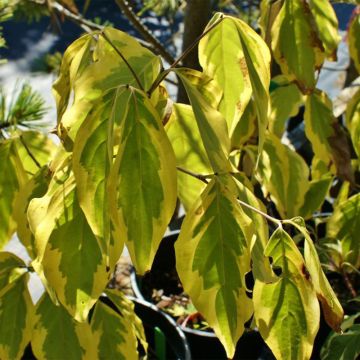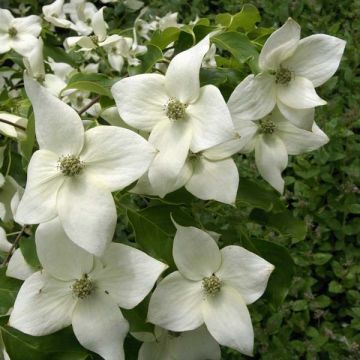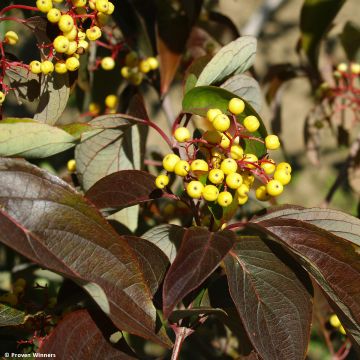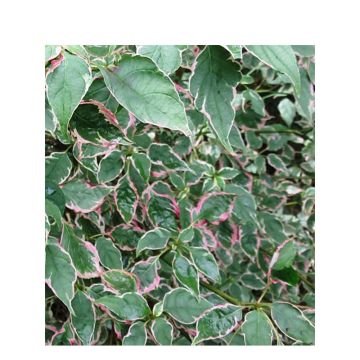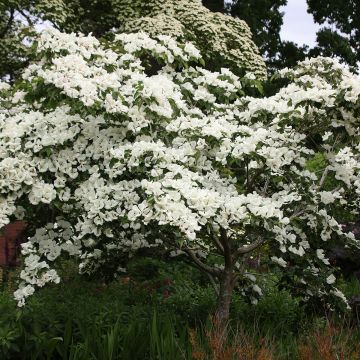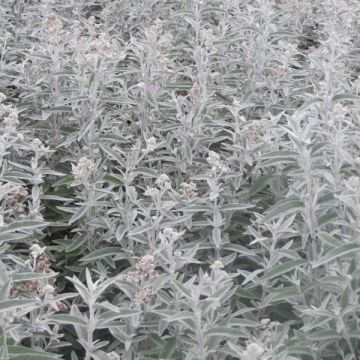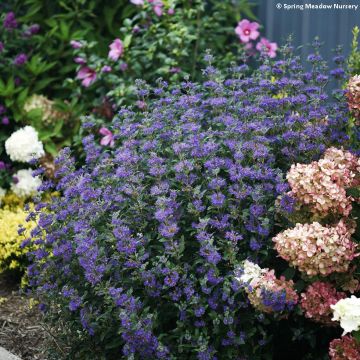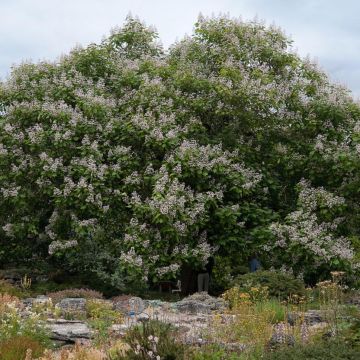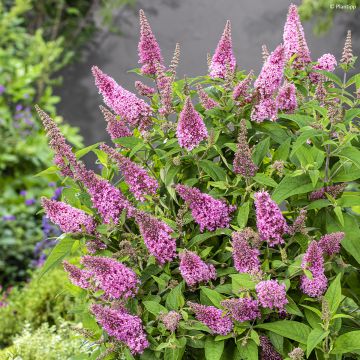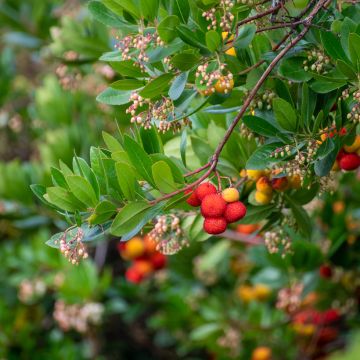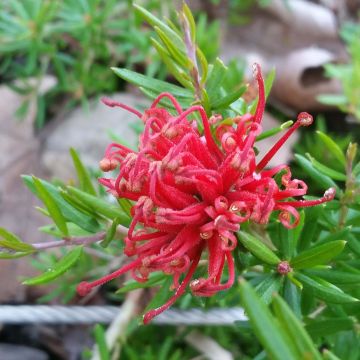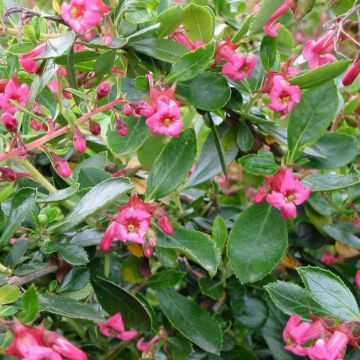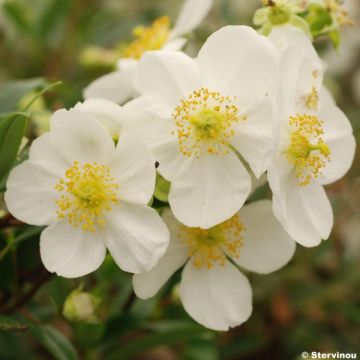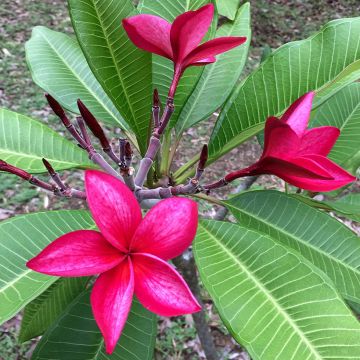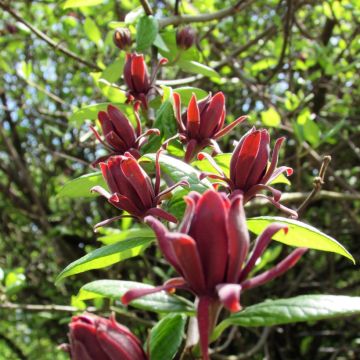

Cornus controversa Marginata Nord - Giant Dogwood
Cornus controversa Marginata Nord - Giant Dogwood
Cornus controversa Marginata Nord
Giant Dogwood, Wedding Cake Tree
This item cannot be shipped to the selected country
Delivery charge from €5.90
More information
Schedule delivery date,
and select date in basket
This plant carries a 24 months recovery warranty
More information
We guarantee the quality of our plants for a full growing cycle, and will replace at our expense any plant that fails to recover under normal climatic and planting conditions.
From €5.90 for pickup delivery and €6.90 for home delivery
Express home delivery from €8.90.
Does this plant fit my garden?
Set up your Plantfit profile →
Description
The Cornus controversa Marginata Nord is a Pagoda Dogwood closely related to the wild species, but distinguished by the fine white margin that adorns the edges of its green leaves. Its tiered branch growth gives it the characteristic and appreciated silhouette among this group of large shrubs. In mid-spring, a multitude of cream-white inflorescences appear, covering the foliage. These then develop into small blue-black fruits in late summer, while in autumn, the foliage takes on warm colours. A superb shrub to be isolated on a lawn or to serve as an attractive focal point in a planting bed, in cool, neutral to acidic soil.
The Dogwood belongs to the small family of Cornaceae, which, after several revisions of the botanical classification, now only includes the genera Cornus and Alangium. There are several dozen species of Dogwoods, most of which are shrubs, but in its natural habitat, the Cornus controversa, native to China, Korea, and Japan, forms a tree that can reach up to 12 m in height. It has a straight trunk and horizontal tiered growth, and it is the only species - along with C. alternifolia - that has alternate leaves, rather than opposite. In Japan, it can be found up to 2600 m in altitude, which demonstrates its good hardiness.
Marginata Nord is a selection that presents most of the characteristics of the botanical species, but with more limited dimensions. In 10 years of growth, it will reach approximately 4 m in height and width, and will continue to grow to 5 to 7 m in all directions, depending on the climate and soil. This beautiful shrub develops equally in width and height, especially as it ages, as it produces branches that spread further and further from the trunk, almost horizontally. It becomes increasingly ornamental as it ages, with its almost geometric shape being remarkable during the growing season, and equally enjoyable after the leaves have fallen.
The leaves are elliptical with a pointed tip, about ten centimetres long and 4 cm wide. Their green colour is enhanced by a fine, irregular white border, with occasional indentations towards the inside of the leaf blade. Carried by a flexible petiole, they often lightly droop on either side of the branches. In May-June, large inflorescences form, measuring 10 to 12 cm in diameter, composed of numerous small cream-white flowers. Slightly rounded in the centre, these inflorescences cover the foliage like small clusters of snow, creating a magnificent spectacle. When they fade, the flowers transform into small fruits that are quite decorative in August, with their dark colour in shades of blue-black. Ornamental throughout the season with its white margin, the foliage still offers a beautiful display in autumn with red, purple, or orange colourations.
This Pagoda Dogwood deserves to be planted as a solitary specimen on a lawn, provided that a little patience is exercised, as it will take a few years to fully develop its shape. It can also be planted in association within a planting bed, in the background, ensuring that enough space is left for its development. Its abundant white flowering will harmonise with the vibrant colours of many flowering shrubs such as Chinese Azaleas, which will reward you with their bright trumpets in yellow, pink, orange, red... On the border, plant perennials such as Astilbe japonica Red Sentinel, with its dark green, serrated foliage and its scarlet-red panicles that will extend the flowering period of your scene into early summer. And for even later blooms, rely on Hydrangeas, whose wide range will offer you limitless variety of foliage and flowering.
Report an error about the product description
Plant habit
Flowering
Foliage
Botanical data
Cornus
controversa
Marginata Nord
Cornaceae
Giant Dogwood, Wedding Cake Tree
Cultivar or hybrid
Other Cornus
Planting and care
Easy to grow, this Cornus controversa Marginata Nord requires little maintenance, pruning is unnecessary as its magnificent habit is completely spontaneous. It prefers a fresh, humus-bearing, neutral to slightly acidic soil, and above all, not drying out. Plant it in a sunny or semi-shady position. Dig a hole 50 cm on each side and in depth, and if your soil is a little chalky, mix acidic planting compost (based on turf) with the existing soil, as well as compost or leaf mould. The same advice applies to sandy soil, it is absolutely necessary to increase water retention in this case, choose a shaded exposure, on the edge of trees for example to maintain good atmospheric humidity, and dig a larger planting hole to incorporate compost. If the soil is already neutral or acidic, a slight addition of compost and manure will be sufficient at planting. For maintenance, regularly apply fertiliser, as this Dogwood is a bit greedy, and also use pine bark as mulch to maintain acidity in alkaline soils. Very hardy, resistant to -20°C, it requires little maintenance.
Planting period
Intended location
Care
This item has not been reviewed yet - be the first to leave a review about it.
Summer-flowering shrubs
Haven't found what you were looking for?
Hardiness is the lowest winter temperature a plant can endure without suffering serious damage or even dying. However, hardiness is affected by location (a sheltered area, such as a patio), protection (winter cover) and soil type (hardiness is improved by well-drained soil).

Photo Sharing Terms & Conditions
In order to encourage gardeners to interact and share their experiences, Promesse de fleurs offers various media enabling content to be uploaded onto its Site - in particular via the ‘Photo sharing’ module.
The User agrees to refrain from:
- Posting any content that is illegal, prejudicial, insulting, racist, inciteful to hatred, revisionist, contrary to public decency, that infringes on privacy or on the privacy rights of third parties, in particular the publicity rights of persons and goods, intellectual property rights, or the right to privacy.
- Submitting content on behalf of a third party;
- Impersonate the identity of a third party and/or publish any personal information about a third party;
In general, the User undertakes to refrain from any unethical behaviour.
All Content (in particular text, comments, files, images, photos, videos, creative works, etc.), which may be subject to property or intellectual property rights, image or other private rights, shall remain the property of the User, subject to the limited rights granted by the terms of the licence granted by Promesse de fleurs as stated below. Users are at liberty to publish or not to publish such Content on the Site, notably via the ‘Photo Sharing’ facility, and accept that this Content shall be made public and freely accessible, notably on the Internet.
Users further acknowledge, undertake to have ,and guarantee that they hold all necessary rights and permissions to publish such material on the Site, in particular with regard to the legislation in force pertaining to any privacy, property, intellectual property, image, or contractual rights, or rights of any other nature. By publishing such Content on the Site, Users acknowledge accepting full liability as publishers of the Content within the meaning of the law, and grant Promesse de fleurs, free of charge, an inclusive, worldwide licence for the said Content for the entire duration of its publication, including all reproduction, representation, up/downloading, displaying, performing, transmission, and storage rights.
Users also grant permission for their name to be linked to the Content and accept that this link may not always be made available.
By engaging in posting material, Users consent to their Content becoming automatically accessible on the Internet, in particular on other sites and/or blogs and/or web pages of the Promesse de fleurs site, including in particular social pages and the Promesse de fleurs catalogue.
Users may secure the removal of entrusted content free of charge by issuing a simple request via our contact form.
The flowering period indicated on our website applies to countries and regions located in USDA zone 8 (France, the United Kingdom, Ireland, the Netherlands, etc.)
It will vary according to where you live:
- In zones 9 to 10 (Italy, Spain, Greece, etc.), flowering will occur about 2 to 4 weeks earlier.
- In zones 6 to 7 (Germany, Poland, Slovenia, and lower mountainous regions), flowering will be delayed by 2 to 3 weeks.
- In zone 5 (Central Europe, Scandinavia), blooming will be delayed by 3 to 5 weeks.
In temperate climates, pruning of spring-flowering shrubs (forsythia, spireas, etc.) should be done just after flowering.
Pruning of summer-flowering shrubs (Indian Lilac, Perovskia, etc.) can be done in winter or spring.
In cold regions as well as with frost-sensitive plants, avoid pruning too early when severe frosts may still occur.
The planting period indicated on our website applies to countries and regions located in USDA zone 8 (France, United Kingdom, Ireland, Netherlands).
It will vary according to where you live:
- In Mediterranean zones (Marseille, Madrid, Milan, etc.), autumn and winter are the best planting periods.
- In continental zones (Strasbourg, Munich, Vienna, etc.), delay planting by 2 to 3 weeks in spring and bring it forward by 2 to 4 weeks in autumn.
- In mountainous regions (the Alps, Pyrenees, Carpathians, etc.), it is best to plant in late spring (May-June) or late summer (August-September).
The harvesting period indicated on our website applies to countries and regions in USDA zone 8 (France, England, Ireland, the Netherlands).
In colder areas (Scandinavia, Poland, Austria...) fruit and vegetable harvests are likely to be delayed by 3-4 weeks.
In warmer areas (Italy, Spain, Greece, etc.), harvesting will probably take place earlier, depending on weather conditions.
The sowing periods indicated on our website apply to countries and regions within USDA Zone 8 (France, UK, Ireland, Netherlands).
In colder areas (Scandinavia, Poland, Austria...), delay any outdoor sowing by 3-4 weeks, or sow under glass.
In warmer climes (Italy, Spain, Greece, etc.), bring outdoor sowing forward by a few weeks.

































